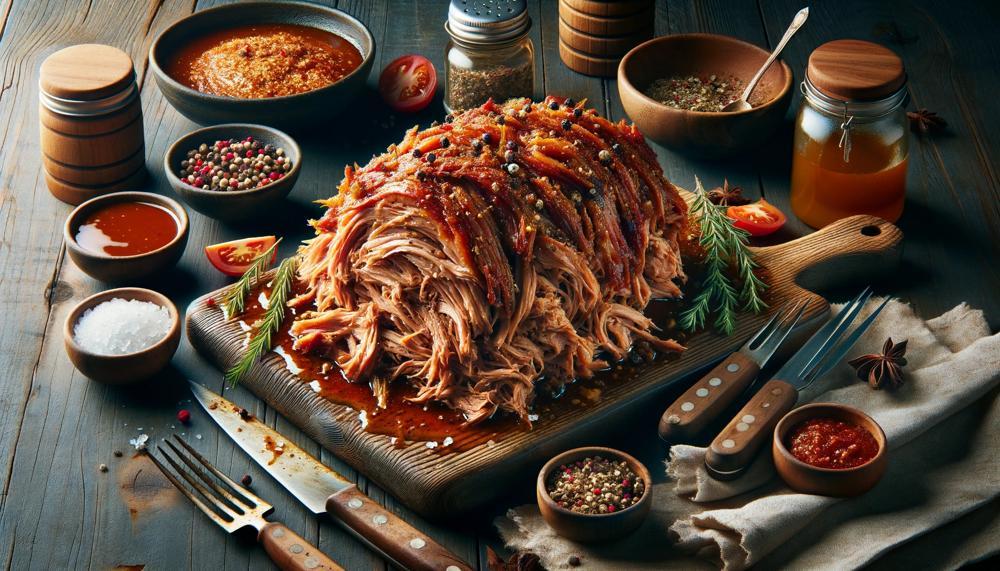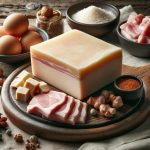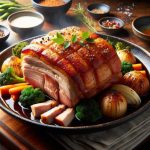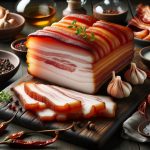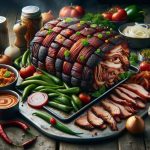Pulled pork, a beloved dish that has stood the test of time, continues to spark debate among cooks and barbecue aficionados. The question at hand: should you cook pulled pork with the fat side up or down? While it may seem like a minor detail, this decision can significantly impact the final outcome of your dish.
In this blog post, we will delve into this age-old discussion and uncover the most effective method for achieving succulent and flavorful pulled pork.
So, do you cook pulled pork fat side up or down?
You should cook pulled pork fat side up. Here are some reasons why:
- Fat rendering: Cooking fat side up helps the fat render more effectively. This position also makes it easier for the fat to crisp up, which adds flavor and texture to the pork.
- Drippings: When you cook fat side up, the drippings coat the meat and protect the surface from drying out.
- Tenderness: Cooking fat side up may result in a more tender product.
- Slow-cooker: When you cook pulled pork in a slow-cooker, you can place the pork fat side up. The fat will render thoroughly during cooking, and it’s easier to remove excess fat before serving.
So let’s dive into this debate headfirst and discover how to elevate your pulled pork game.
Contents
Why is the fat cap important?
The fatty layer on a pork shoulder or butt is a critical element in the cooking process and flavor profile of pulled pork. Not only does it serve as a protective barrier against direct heat, ensuring even cooking, but it also imparts delectable and savory flavors to the meat through self-basting.
However, the position of the fat cap during cooking, whether it is facing up or down, can also impact the final product’s shreddability and tenderness. Overall, the role of the fat cap in pulled pork is crucial, and understanding its influence can guarantee perfect results every time.
| Function | Impact |
|---|---|
| Cooking Process | Insulates meat from direct heat, allowing for even cooking |
| Flavor Profile | Contributes rich and savory flavors through self-basting |
| Shreddability/Tenderness | Affects ease of shredding and tenderness of final product |
In the world of barbecue, there are few cuts of meat more revered than a perfectly cooked pork shoulder or butt. And while many factors contribute to achieving that mouth-watering result, one element stands out above the rest: the fat cap. This thin layer of fat that lines the top of the cut plays a vital role in both the cooking process and flavor profile.
The fat cap’s primary function is to act as an insulator, protecting the meat from direct heat and ensuring even cooking. But it also brings much more to the table – quite literally. As the pork cooks, the melting fat drips down into the meat, adding rich and savory flavors through self-basting. This process is what sets pulled pork apart from other types of cooked meat and is a significant reason for its popularity.
However, the fat cap’s position during cooking can also impact the final product’s shreddability and tenderness. When placed facing up, the fat cap acts as a barrier between the meat and the heat source, resulting in a more tender and easy-to-shred end product. On the other hand, when placed facing down, it can create a crispier exterior but may make shredding more challenging.
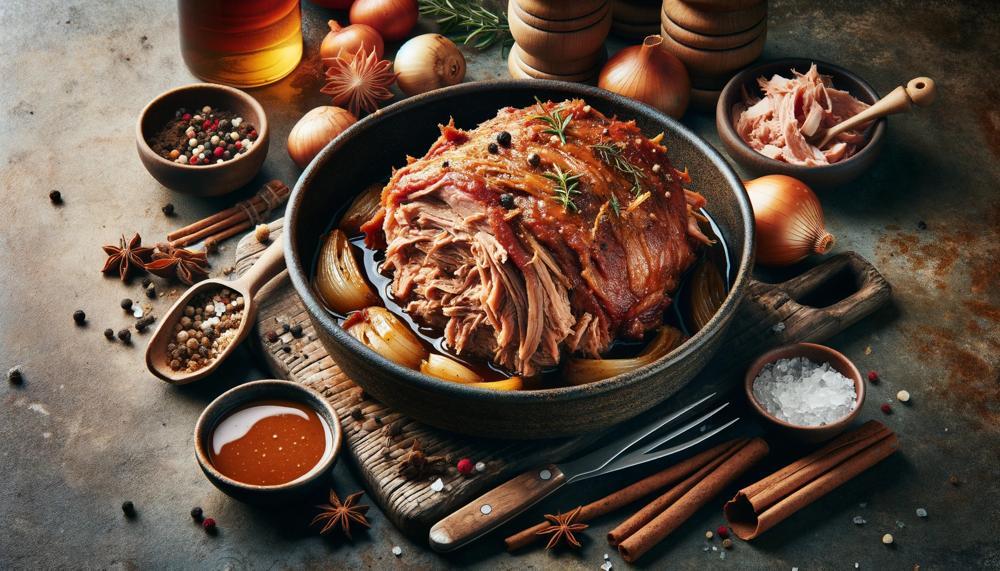
How to Choose the Right Cooking Method
When determining the best way to cook pulled pork, one may wonder whether to place the fat side up or down. There are several important factors to take into consideration in order to make this decision.
These include the purpose of the fat cap, personal preference, the type of smoker being used, whether or not to flip the meat during cooking, and how to check for tenderness.
How to decide whether to cook pork butt with the fat side up or down?
When determining the best approach for cooking pork butt, there are several key factors to take into account:
Personal Taste
The ongoing debate over which method is superior for cooking pork butt boils down to personal preference. It may be beneficial to try both methods and observe which one yields the best results for you.
Cooking Technique
The type of cooking technique and equipment utilized can also influence whether to cook the pork butt with the fat side up or down. For heat sources located at the top, such as smokers or grills, cooking with the fat side down may be more advantageous.
Conversely, for bottom heat sources like slow cookers or ovens, cooking with the fat side up may be more suitable.
Meat Cut
The size and shape of the pork butt can also impact which method is most effective for cooking. If the cut has a thick layer of fat on top, cooking it with the fat side up may result in an excessively greasy final product.
Safety
It is crucial to ensure that the pork butt is cooked to a proper internal temperature to prevent foodborne illnesses.
This can vary depending on the cooking technique and equipment used, so always refer to a meat thermometer and adhere to proper food safety guidelines.
Health Considerations
While pork butt is an economical and delicious cut of meat, it should be consumed in moderation due to its high fat content. Excessive consumption of fatty meats can have adverse health effects, so consider incorporating other lean protein options into your diet.
In conclusion, the decision of whether to cook pork butt with the fat side up or down should be based on individual preference and equipment used. It may be worth experimenting with both methods and determining what works best for you.
Tips for cooking pork butt fat side up or down
When preparing pork butt, there is a long-standing debate on whether it should be cooked with the fat side up or down. To help you achieve the most favorable outcome, here are some useful pointers:
- Familiarize yourself with the pork butt’s anatomy and its significant fat content.
- Take into account your chosen cooking method – smoker or slow cooker versus oven or grill.
- Modify the cooking duration based on the placement of the fat.
- Utilize a meat thermometer to guarantee proper cooking.
- Allow your pork butt to rest after cooking to ensure maximum juiciness.
Conclusion
In the world of culinary arts, even the smallest details can make a big difference in the final outcome of a dish. And when it comes to pulled pork, one crucial factor that often sparks debate is whether to cook it with the fat side up or down.
As we’ve delved into in this blog post, the fat cap plays multiple roles in creating succulent and flavorful pulled pork – from insulation and self-basting to adding depth of flavor. But its placement during cooking can also impact the tenderness and shreddability of the meat.
While there is no definitive answer on which way to position the fat cap, considering factors such as personal preference, cooking method, and cut of meat can help guide your decision. And don’t forget to utilize tips like using a meat thermometer and allowing for resting time after cooking to ensure perfectly juicy pulled pork every time.

